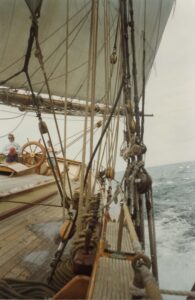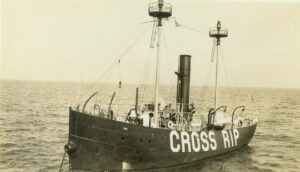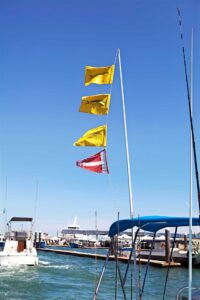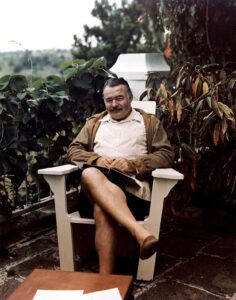The standard dictionary entry for the San Juan Islands goes like this: SAN’ JUAN’ IS’LANDS (sæn hwa:n) N. PL. An archipelago of northwest Washington off the southeast coast of Vancouver Island North of Puget Sound.
But that doesn’t give any inkling of the unique role the San Juans played in the territorial ambitions of Great Britain, Spain, and the newly created United States of America at the close of the 18th century.
There are about 172 islands in the group, set 65 miles north of Seattle. The largest islands are Orcas, San Juan, Lopez, Decatur, and Shaw. They are surrounded by straits named Georgia, Haro, Rosario, Juan de Fuca, and Boundary Pass. And all these names are clues to the history of this corner of the Pacific Northwest.
The voyages of the Age of Discovery are replete with experienced seafarers brave enough to undertake risky explorations in the name of a European monarch. The Italians Cristoforo Colombo and Zuan Chabotto are better known today as Christopher Columbus and John Cabot. The former held a commission from the King and Queen of Spain, the latter from the King of England. A Greek sea captain named Ionnas Phocas, hired by King Philip II of Spain, is better known by the Spanish transcription of his name: Juan de Fuca. De Fuca was tasked with finding the Northwest Passage, the elusive sea route across North America linking the Atlantic and Pacific Oceans. The Strait of Anian was fabled to be the Pacific entrance to the Northwest Passage, and in 1592 de Fuca claimed to have discovered it. Almost 200 years later, an English captain rediscovered the body of water and renamed it the Strait of Juan de Fuca.
In the late 1700s, with Great Britain claiming parts of the Pacific Northwest south of Canada and Spain claiming many of those same places north of California, an international crisis was brewing. In the spring of 1789, the King of Spain ordered the Viceroy of New Spain (Mexico), Juan Vicente de Guemes Padilla Horcasitas y Aguayo, to stand firm on Spain’s claims to the Pacific Northwest. Viceroy Horcasitas sent an expedition the following year to enforce Spain’s claims. In May of 1790, a ship from this fleet, led by Manuel Quimper and his navigator Gonzalo Lopez de Haro, explored deep into the Strait of Juan de Fuca and discovered a group of islands, soon named the San Juacanpltisolands in honor of the Mexican viceroy. The next winter, Spain proposed that the Strait of Juan de Fuca should become the boundary between England’s and Spain’s possessions. In 1791, both Spanish and British expeditions set out to map the proposed boundary area. In the process, Orcas Island was named for the viceroy (short for “Horcasitas”) and the navigator de Haro’s name was given to the Strait of Haro. The following year, George Vancouver named the Strait of Georgia in honor of King George III of England. The peaceful accommodation of imperial borders between Spain and England was put into place and remained that way until 1819. That was the year that Spain transferred its Pacific Northwest territories to the nascent United States of America.
The San Juan Islands were recharted in 1841 for the U.S. Navy as part of the United States Exploring Expedition, led by Charles Wilkes, and in the process Wilkes renamed many of the islands. He chose to honor many of the American naval heroes of the War of 1812, and the surnames of Commodore Stephen Decatur and Captain John Shaw were affixed to two of the larger islands.
In 1840, the Province of Canada was created as part of the British Empire, and the boundaries between the U.S. and Canada needed to be clarified. The Oregon Treaty established the 49th parallel as that border, but unfortunately the wording of the treaty described the border as going through the “major channel” in the Strait of Juan de Fuca, but neglected to name that channel. This led to bickering between the Americans and the British, culminating in the Pig War of 1859. The war almost became serious when Captain George Pickett of the U.S. Army faced down three British warships, each side shouting insults at the other for a few days. (Pickett would get his due four years later as a Confederate general at the Battle of Gettysburg, leading his eponymous charge). Luckily, the only casualty of the war was one pig, owned by an Irishman in the employ of a British company and shot by an American farmer.
An uneasy peace continued in the San Juans until 1872, when an international arbitrator, Kaiser Wilhelm I of Germany, finally decided what the boundary should be. The kaiser decided in favor of the United States, and the final — and current — boundary cuts through the Strait of Juan de Fuca, Haro Strait, Boundary Pass, and the Strait of Georgia, with the San Juan Islands firmly on the U.S. side.
Today we can enjoy the San Juans at our boating leisure. The ideal place to begin a San Juans cruise is the town of Anacortes. Cap Sante Marina (360-293-0694, porto- fanacortes.com) is close to all the amenities and has plenty of transient slips available. Choose a route that fits your style and timeframe, but be sure to include the little bays of Orcas Island and Port Friday on San Juan Island (360-378-2688, portfridayharbor.org). Watch for the porpoises off your bow as you sail into Prevost Harbor at Stuart Island State Park, and keep an eye out for orca and minke whales as well.
Every American boater owes a debt of gratitude to Lyman Cutlar, the trigger-happy farmer who shot the pig, and to Kaiser Wilhelm. Thanks to their efforts, we do not have to clear in and out of Canadian customs to cruise the San Juans. To honor that debt, I propose that one night during your cruise of the San Juan Islands, you grill a rack of baby back ribs and wash it down with your favorite German beer.
Capt. Jeff Werner has been in the yachting industry for over 25 years. In addition to working as a captain on private and charter yachts, both sail and power, he is a certified instructor for the USCG, US Sailing, RYA and the MCA. He is also the Diesel Doctor, helping to keep your yacht’s fuel in optimal condition for peak performance. For more information, call 239-246-6810, or visit MyDieselDoctor.com. All Marinalife members receive a 10% discount on purchases of equipment, products and supplies from Diesel Doctor.





